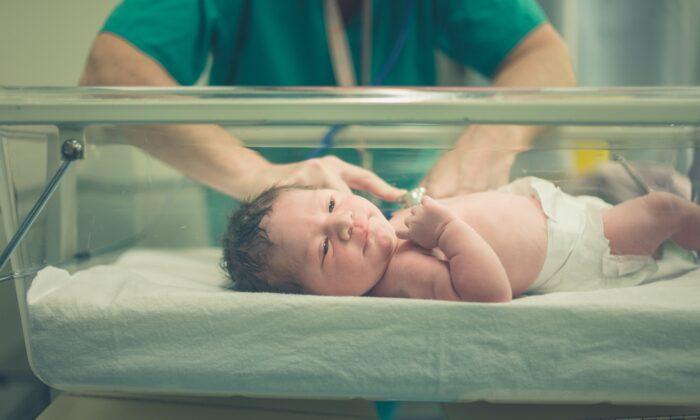When the pandemic hit, the Canadian government ordered several field hospital units that could be deployed when regular hospital capacity was maxed out.
To date, four of these mobile health units (MHUs) have been procured at a
cost of $189 million, plus some $600,000 monthly to store them. None of them have been used as was expected.
Two of the units were deployed to Hamilton and Toronto for several months last year, but they were not actually used, Public Services and Procurement Canada (PSPC) spokesperson Stéfanie Hamel told The Epoch Times. The other two were never deployed, though the oxygen compressor from one was sent to Stanton Territorial Hospital in Yellowknife, where it was recently sold to the Northwest Territories government.
Strained Capacity?
A Public Safety Canada news release issued on
Jan. 22, 2021, announced the deployment of the two MHUs to Ontario “in response to a provincial request for assistance.” “The MHUs will relieve pressure on Ontario’s strained hospital capacity due to the prevalence of COVID-19 in the province,” it said.
On
April 17, 2021, Public Safety Canada announced that it would extend the time of those two MHUs’ deployment until the end of June. That news release did not mention the MHUs had not been used.
PSPC’s Hamel told The Epoch Times via email on Dec. 5 that, “although deployed, the MHUs were not used, as the additional capacity was not required in Toronto and Hamilton.”
The Epoch Times asked Hamel and both hospitals to which the MHUs were deployed for clarification on why the additional capacity was not required when capacity was reportedly “strained.” The Epoch Times also asked whether it might have to do with a shortage of staff to run the MHUs.
Hamel, Sunnybrook Health Sciences Centre in Toronto, and Hamilton Health Sciences did not respond as of publication time.
When the MHU deployed to Sunnybrook was shutting down in July last year, Rob Burgess, senior director of emergency preparedness at that hospital,
told the Toronto Star that it had served 32 patients.
At around the same time last year, the Hamilton Spectator
reported that Hamilton Health Sciences was taking down its MHU only a month after its
opening and that the MHU had not been used to care for a single patient. That MHU was not set up and ready to accept patients until May 31 despite issuance of the deployment announcement in January.
Past, Present, Future Costs
In the spring of 2020, PSPC began contracting companies to produce the MHUs. It awarded the contracts to two companies, Weatherhaven Global Solutions and SNC-Lavalin. The former has been paid $107.3 million for providing three units, the latter $81.7 million for one unit,
according to PSPC’s most recent update on the contracts, from June 10. That’s a total of $189 million.
Hamel told The Epoch Times Dec. 5 that the monthly cost of storing the units is $618,135, or about $7.4 million annually. Weatherhaven alone has the contract for storage and maintenance. It is unclear how long the units will stay in storage.
Commenting on the future of the units, Hamel said: “Given the evolving nature of the COVID-19 pandemic, PSPC is consulting with health officials on options regarding the MHUs.”
PSPC listed in its
budget estimates for 2022–23 about $135 million for “funding to provide supplies to the health system.” Hamel told The Epoch Times that this money is allotted not only for storing the MHUs, but also for covering the costs of deploying, operating, and maintaining them if they are needed. And it helps PSPC provide support to the government’s pandemic response “more broadly, for the provision of logistics services and procurement services.”
On Jan. 18, Health Minister Jean-Yves Duclos was
questioned in front of the House of Commons standing committee on health about the MHUs. He could not provide detailed information on them, but said: “This is an example of the significant level of preparation that we did throughout the crisis to prepare for all sorts of eventualities.”
He added, “This is obviously in support of the needs and requests of the provinces and territories.”





